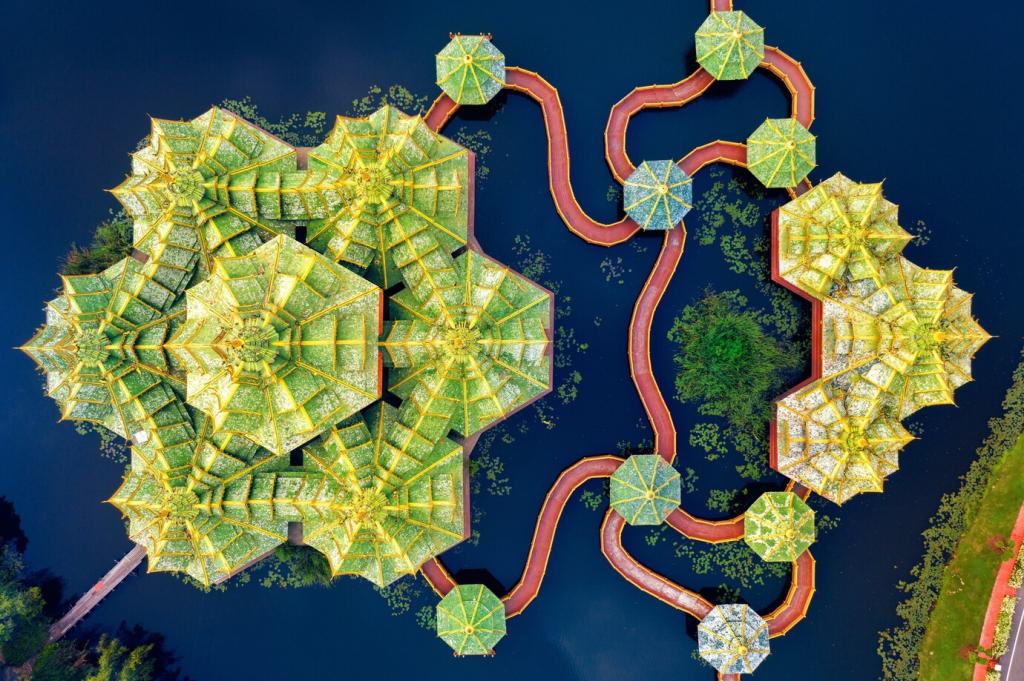
Innovative Landscape Design Techniques
Discover how cutting-edge landscape design techniques are transforming outdoor spaces into sustainable, functional, and visually captivating environments. This comprehensive guide explores the latest methods and philosophies reimagining landscapes for both residential and commercial projects, blending artistry with ecological responsibility. Whether you’re embarking on a new project or looking to refresh an existing space, these innovative strategies offer inspiration and practical solutions for the modern landscape designer.

Water-Efficient Gardening
By implementing water-efficient gardening, designers support resilient green spaces that require minimal watering. Techniques like xeriscaping, rain gardens, and strategic planting choices help reduce water consumption significantly. Incorporating drought-tolerant species, enhancing soil structure, and utilizing smart irrigation systems all contribute to beautiful yet responsible gardens that cope well with changing climates and local water restrictions. Such practices ensure long-term sustainability without sacrificing aesthetic ambitions.

Native Plant Selection
Selecting native plants is a cornerstone of eco-friendly landscaping. These species are adapted to the local environment, requiring less water, fertilizer, and maintenance than their exotic counterparts. Native plants foster biodiversity by providing habitat for indigenous wildlife, including pollinators like bees and butterflies. Designers who prioritize native flora not only achieve a distinctive and regionally appropriate look but also support vital ecological functions, making landscapes more resilient and vibrant.
Smart Technology Integration
Automated irrigation systems utilize sensors and programmable timers to deliver precise amounts of water only when needed. This technology not only conserves water but also nurtures plants by preventing overwatering or underwatering. Designers can connect systems to weather data for advanced responsiveness. The result is a hands-off approach that guarantees lush landscapes while embracing sustainability and convenience.

Creative Hardscape Solutions
Permeable paving offers both aesthetic appeal and environmental benefits. Unlike traditional impermeable surfaces, these materials allow rainwater to infiltrate the ground, reducing runoff and replenishing aquifers. Options like porous concrete, interlocking pavers, and gravel blends are now available in diverse styles, lending visual interest while aligning with sustainable site development. Permeable systems can be seamlessly integrated into patios, driveways, and walkways, enhancing both function and form.
Previous
Next
Previous
Next
Multi-Sensory Experience Enhancement
Soundscapes and Acoustical Design
Sound elements can transform a landscape’s ambiance, from the tranquil trickle of water features to the rustle of ornamental grasses and the placement of wind chimes. Acoustical design addresses undesirable noise by incorporating natural buffers, such as dense plantings or water walls, that absorb or mask distractions. By intentionally sculpting the auditory environment, designers create calming, meditative spaces or lively, interactive zones that amplify the emotional impact of the landscape.


Scent-Driven Plant Planning
Fragrance is a powerful, often underutilized component of landscape design. By curating plantings with attention to seasonal bloom times and aromatic qualities, designers enrich spaces with pleasing scents throughout the year. From perfumed roses and lavender to scented foliage like mint and eucalyptus, the careful placement of these plants ensures a memorable sensory journey and enhances relaxation, wellness, and enjoyment for all visitors.
Urban Green Space Innovations
Green roof systems transform unused rooftop surfaces into living landscapes that provide insulation, reduce stormwater runoff, and improve air quality. Designers can create everything from productive gardens and grassy lounges to lush meadows overhead, bringing life to urban skylines. Advances in lightweight soil substrates and irrigation infrastructure now allow for diverse plant palettes even on challenging sites, making green roofs a hallmark of sustainable city design.

Edible and Productive Landscapes
Ornamental food gardens blend edible plants, such as vegetables, fruit trees, and herbs, with traditional landscaping elements for beautiful, productive results. Creative layouts ensure visual harmony while supporting bountiful harvests. By intermingling crops with flowering perennials and shrubs, these gardens avoid a utilitarian appearance, instead celebrating abundance and beauty side by side—a perfect fit for modern home and community landscapes.
Urban agriculture brings food production to city cores, residential yards, and commercial properties. Raised beds, container gardens, and rooftop farms provide fresh food and educational opportunities where space is scarce. These projects often double as community assets, offering healthy produce and green space for relaxation and gathering. The integration of agriculture into the built environment is redefining what cities can offer their residents, yielding both social and ecological benefits.
Productive landscapes can serve habitat goals alongside food production by incorporating flowers and plants that support pollinators and beneficial insects. Careful plant selection creates environments where bees, butterflies, and birds thrive, increasing biodiversity and improving garden yields. These gardens demonstrate that edible landscapes can be vibrant, ecologically connected, and supportive of the delicate relationships upon which food systems depend.
Join our mailing list
